Hello everyone,
Here we go again with another post…….
GROWTH EUPHORIA
As we weave our way into the last month of Q2 2014, several factors stand out that merit mention. Per PWC, the Eurozone is on the way to recovery and poised to register growth this year – for the first time in three years. This is substantiated by stock markets posting returns of more than 20% in the past year, while yield on corporate bonds are nearing record lows. The UK economy is also reportedly in good health according to two major business lobby groups – the Confederation of the British Industry (CBI) and the British Chambers of Commerce (BCC). The CBI says growth reached a record high in May. The BCC has also upped its growth rate for 2014 from 2.8% to 3.1%, which is well above the 2.7% forecast by the Office for Budget Responsibility (OBR) – the Government’s independent fiscal watchdog [BBC]. Though the U.S. economy contracted the first quarter after it began the year on a roller-coaster ride, it is still on track to register a 3% annual growth backed by statistical data on movement of goods (trucking sector), unemployment rate and other relevant factors. The dip in Chinese exports has reiterated the need to focus on boosting domestic consumption which is a better-late-than- never scenario.
GFRP FORMWORK – IN REAL TIME
A key advantage of prefab sandwich panels in composites such as ease of transportation and installation is legion. Building bridges over busy waterways are generally accompanied by delays and disruptions to shipping traffic. In a departure from conventional norm, rather than moving the steel structure into place and building the formwork, engineers building the Uyllander bridge in Amsterdam (Netherlands) turned the process around. The steel structure – steel arch and steel trusses spaced 3.8 meters apart was constructed onshore, after which a lightweight GFRP sandwich panel formwork was installed, also onshore. Lightweight and stiffness were key requirements in the the GFRP design – the deflection in the middle of the panel could not exceed 25mm when concrete was cast (weight of concrete + steel reinforcement was ~800kg/sq met). Another challenge was to provide a supporting edge with a thickness of 15mm so as to limit the supporting thickness at the edges. 72 GFRP sandwich panels were produced by vacuum assisted RTM, complete with integrated holes needed for installing the steel strips to hold the pipes running under the bridge. The panels were installed onshore, after which the bridge was moved into place, the steel rebar was constructed and the concrete deck was cast. A key aspect was to minimize traffic interruptions, which was successfully accomplished [Plastics Today].
Novelty in thinking and execution is a key trait in problem-solving.
Innovations abound when it comes to responding to market needs for lighter/stronger materials with improved performance. The icing on the cake is, undoubtedly, overall cost reduction. A new generation of carbon fiber reinforced polyamide compounds processable by injection molding, to potentially replace structural metal components in automotive, oil and gas and industrial applications hold great promise. The company (Lehvoss NA) claims that the compound has 50% greater tensile strength,15% more stiffness and 90% greater impact strength than traditional carbon fiber reinforced polymers. Further advantages claimed are good tribological properties, electrical conductivity and low co-efficient of thermal expansion [Plastics Today].
JUGGLING WITH CYCLE TIME & COST
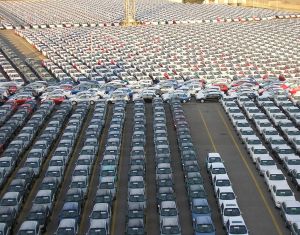
Cannon‘s Epoxy Structural Reaction Injection Molding (ESTRIM) is a faster alternative to traditional resin transfer molding of epoxy parts. The company’s processing technology for CFRP parts for the BMW (i3 and i8) that has been supplied to Benteler-SGL Automotive Composites, has a dosing unit with a liquid lay-down distribution method which deposits a liquid ribbon of formulated resin over the carbon fiber reinforcement. The uniform film of resin impregnates the fibers once pressed in the mold. The absence of in-mold flow of reacting resin coming from the mixing head drastically reduces the counter-pressure generated during injection, allowing for use of low-tonnage clamping presses [European Plastics News]. The obvious economics are low investment in molds and clamping tools, lower energy consumption during each cycle, all culminating in lower production costs. The ESTRIM mixing head technology allows fast-reacting formulations to be used with demolding possible after three minutes !
Long glass fiber reinforced PP (in the LFT category) has been employed by automakers as a weight and emission reduction solution for large molded structural parts such as front-end modules (FEM), door modules, instrument panel carriers, tailgates and seat structures. A leading sustainability independent consulting firm has found that a FEM made of PP based LFT had a life cycle greenhouse gas emission (GHG) of 78 kg vs. 149 kg with a polyamide hybrid solution – a 48% reduction. The data also showed that the PP based LFT had a lower life cycle energy footprint of 1,200 megajoule vs. 2,140 mj for one with a polyamide hybrid solution – a 44% reduction. The advantages of PP based LFT on vehicle emission reduction are obvious [Plastics Today].
CONCEPT – TO – TESTING
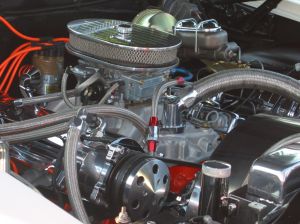
When it comes to lightweighting in automotive design, the permutations and combinations are endless; depending to some extent, on the end performance requirements of the component in service. Composites continue to make inroads in the metal domain for under-the-hood applications. An interesting, as yet untested development is a thermoformed hose. The technology consists of weaving carbon or glass fibers together into a hose, which is then transferred to a mold along with a thermoplastic such as polypropylene (PP). The mold is subsequently heated to 240°C for three minutes, after which air is pumped into the mold, raising the air pressure in the mold. This causes the reinforcing fibers to be pressed against the hot wall of the mold. The materials come together, following which the part is finished under normal pressure (5-6 bar) used for thermoforming. The finished part could replace different metal brackets under the hood, it is claimed [Plastics Today].
THRESHOLD OF REALITY
Ever head of biomimicry ? It is all about learning from nature – studying nature’s designs and emulating these to solve human challenges. Typical example – the famed Velcro ! Following the success story of self-healing polymers, nature has once again shown the way for self-healing composites ! The bane of composites damage, as we all know, is delamination. Internal delamination is not only difficult to detect, but well nigh impossible to repair by conventional techniques. Perhaps, this has been the most single limiting factor in greater widespread use of composites, as a small internal crack can lead to irreversible damage. It appears, there is now hope. Researchers at the Beckman Institute’s Autonomous Materials Systems (AMS) Group in Illinois created 3D vascular network patterns of micro channels filled with healing chemistry – that threads through a fiber reinforced composite. When damage occurs, the networks within the material break apart and allow the healing chemistry to mix and polymerize, autonomously healing the material, over multiple cycles. Creating the vascular architecture integrates seamlessly with typical manufacturing processes of polymeric composites, thus rendering it a strong candidate for commercial use. The vessel system is made up of two different micro channel networks, each containing one of the two liquid healing agents (an epoxy resin and hardener). Delamination damage to the composite ruptures the capillary network and triggers the delivery and subsequent polymerization of reactive chemical species. It was found that arranging the vessels in an overlapping herringbone design promoted better mixing of the liquids (enhanced mixing through increased interfacial and overlapping fluid boundary layers) compared to parallel configuration (diffusion is primarily limited to adjacent bands between the delivered heating agents). When a fracture occurs, it ruptures the separate networks of healing agents automatically releasing them into the crack plane – akin to a bleeding cut. As they come in contact with one another in situ, or within the material, they polymerize to essentially form a structural glue in the damage zone. After each healing cycle, it was found that higher loads were required to propagate the crack with the herringbone configuration [Plastics Today].
BIO-BASED : THE FUTURE
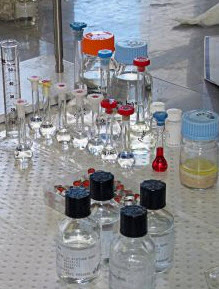
The shale gas boom has resulted in North American ethylene producers shifting more to natural gas based feedstocks and away from petroleum based naphtha, as reported in our earlier posts. The result has been a sharp reduction in production and availability of propylene. This has resulted in bio-based chemicals attracting serious interest as drop-in replacements for petroleum based commodity chemicals. Epichlorohydrin (which is one of the starting materials for epoxy resin) is now being produced from glycerol (instead of propylene). Likewise, propylene glycol (a key ingredient for unsaturated polyester resins) is now being produced from glycerol. Such paradigm shifts are bound to affect (ease) the raw material availability and price volatility witnessed in the resin market over the years and provide a boost to bio-based chemicals in the long run [Plastics Today].
The Alfa Romeo is set to return to the U.S. this month after nearly two decades. The 4C is a carbon fiber fitted sports car optimized for low weight and agility. It has an one-piece monocoque CFRP chassis weighing just 65 kg. More models are on the way in 2015 [Plastics News].
THINKING OUTSIDE THE BOX !
Hitherto, offshore wind turbines are installed in water less than 30 meters deep. The concept of undersea energy storage through the use of giant concrete storage spheres is now being touted by researchers at MIT. The idea is that when offshore turbines are producing more electricity than the grid needs – overnight or on weekends, when demand is slack; power would be used to pump seawater out of the hollow spheres placed at the seafloor beneath the turbines. When extra power is needed, the system would take advantage of hydrostatic pressure, opening up to suck water back into the spheres, with the water passing through a hydropower turbine to generate electricity. Reportedly, one such 25-meter sphere in 400-meter-deep water could store up to 6 mWh of power. To be economically feasible, the system would need to operate in water at least 200 meters deep with cost/mWh dropping until 1,500 meters, before beginning to trend upward. The turbines would float, anchored by the massive concrete spheres that also store energy. Now comes the hard part – preliminary estimates indicate that one such sphere could be built and deployed at a cost of $12 million. This could yield an estimated storage cost of 6 cents/kWh – a level considered viable by the utility industry [Earth Techling]. This is more relevant in Europe where offshore wind power rules the roost. The U.S. though is still grappling with its first major offshore installation.
The good news is that constant efforts are being made technologically and otherwise, to reduce the cost of offshore wind energy and it is yielding positive results. The first step is the willingness to think strategically and then evolve ways to execute the same.
Till the next post,
Cheers,
Email: SS@essjaycomposites.com
Twitter: @essjaycomposite
Website: www.essjaycomposites.com

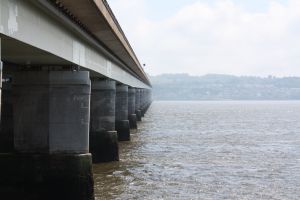

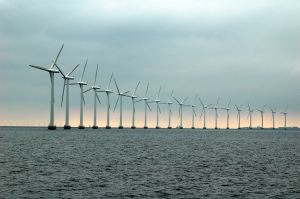
You must be logged in to post a comment.